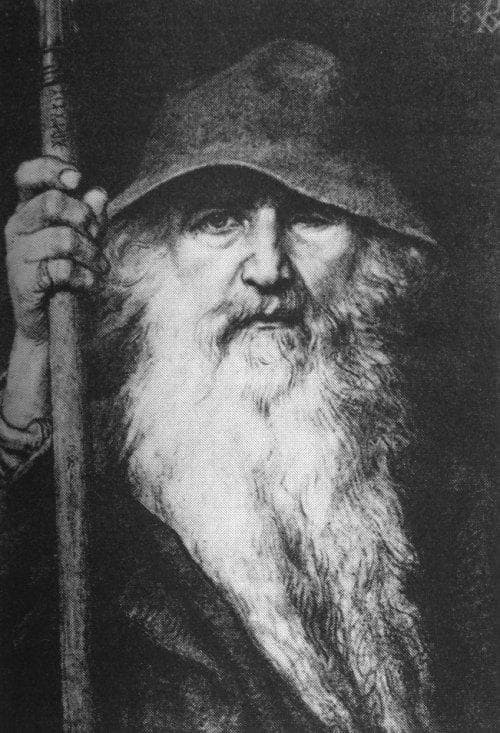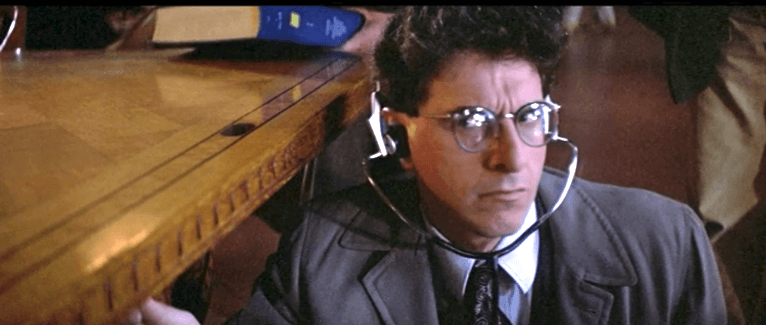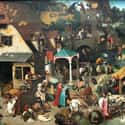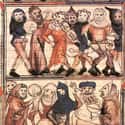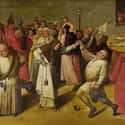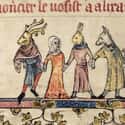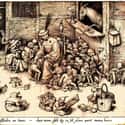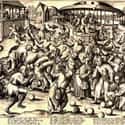-
(#5) Gambling Was Made Legal For The Day
All the rules were lifted: prohibitions on gambling for money were repealed for a single day, so everyone gambled. As one scholar explains, "There were no regulations: on this day, people were permitted to do everything that was forbidden during the rest of the year." And people definitely took advantage.
-
(#1) People Hid Their Identities By Crossdressing And Covering Themselves With Animal Dung
The concept of inversion was at the core of the Feast of Fools. The people at the bottom of the social hierarchy had a single day to act like the most powerful in society. For example, students hid their identity and parodied their social betters: clergy, teachers, and rulers. Sometimes, the students rubbed mud on their faces – or even animal dung – or simply wore a mask. Men dressed as women and women as men, to invert the traditional gender hierarchy. And everyone sang, danced, and drank.
-
(#2) Monks And Nuns Were The Wildest Partiers Of All
Because the Feast of Fools was all about breaking rules, the wildest partiers were often the people who lived by the strictest commandments the rest of the year: monks and nuns. As French theologian Jean Gerson ranted in 1402, the Feast of Fools was full of, "abominable disorders" and, "great, detestable abuses done in the kingdom of France, in diverse churches and abbeys of monks and nuns." And Gerson was correct that many of the festivities took place in churches.
Maybe it isn't surprising that the Feast of Fools began at the same time the Catholic Church officially said all priests had to be celibate. During an era when monks, nuns, and priests were expected to live up to even higher standards, they wanted one day to break all the rules and celebrate.
-
(#3) The Church Tried To Ban Masks Entirely Since People Acted Crazier In Disguise
Even though the Feast of Fools was a wild party with no rules, people still wanted to hide their identities. After all, they were throwing dice in church and singing obscene songs. So, many medieval partiers showed up for the Feast of Fools wearing masks.
The authorities knew that the masks only made people more wild, so they tried to ban masks. In 2017, Pope Innocent III complained about "masked shows" that took place in church during Christmas season. In Lille in 1398, the church declared that masks were banned at New Year's celebrations. Another church complained in 1404 that the clergy were wearing "masks in the shape of devils."
-
(#11) The Party Had Roman Roots
The Feast of Fools shared a number of similarities with the Roman festivities of Saturnalia. During Saturnalia, a celebration of the Roman god Saturn, social roles were also reversed. A mock king was chosen, and slaves were allowed to do what they wanted for a day. And Saturnalia was also celebrated around Christmas time – in fact, the Roman celebration likely influenced how Christians celebrate Christmas.
If the Feast of Fools did have Roman roots, it's less surprising that the Catholic Church wanted to condemn it, even if the celebration originally started to honor a Gospel verse.
-
(#4) The Catholic Church Banned The Party For Blasphemy
According to the Catholic Church, the Feast of Fools was extravagant to the point of blasphemy. It's no surprise that a celebration of disorder didn't find favor with the church, especially when the parties often took place inside churches. But the church had a hard time stamping out the tradition, which was incredibly popular.
In 1445, the theologians at the University of Paris wrote a letter condemning the practice. They described the events in horrified terms:
Priests and clerks may be seen wearing masks and monstrous visages at the hours of office... They dance in the choir dressed as women, panders or minstrels. They sing wanton songs. They eat black puddings... while the celebrant is saying mass. They play at dice... They run and leap through the church, without a blush at their own shame.
After this condemnation, the Catholic Church officially banned the Feast of Fools in the 1400s. But the parties continued for at least another century.
New Random Displays Display All By Ranking
About This Tool
April Fools' Day is an ancient festival in European history. In modern times, April Fools' Day is a festival for joking with each other, but the Europeans in the Middle Ages attached great importance to these days and their celebrations were extremely crazier. It can be said that it was the feast of fools that allowed people in the Middle Ages to spend a long and hard time. The Middle Ages is not a beautiful era in people's ideas.
At that time, the serious and hard-line medieval church not only did not suppress this recreational activity but supported and encouraged such activities in the feast of fools. The random tool introduced 12 extreme things of the Medieval feast of fools.
Our data comes from Ranker, If you want to participate in the ranking of items displayed on this page, please click here.






